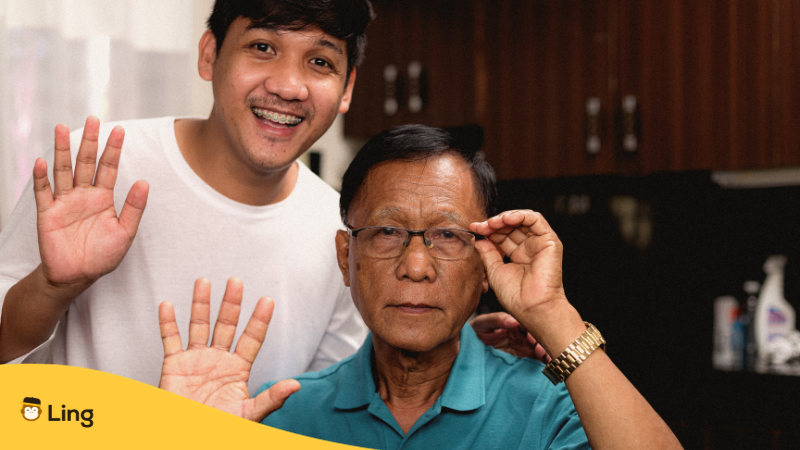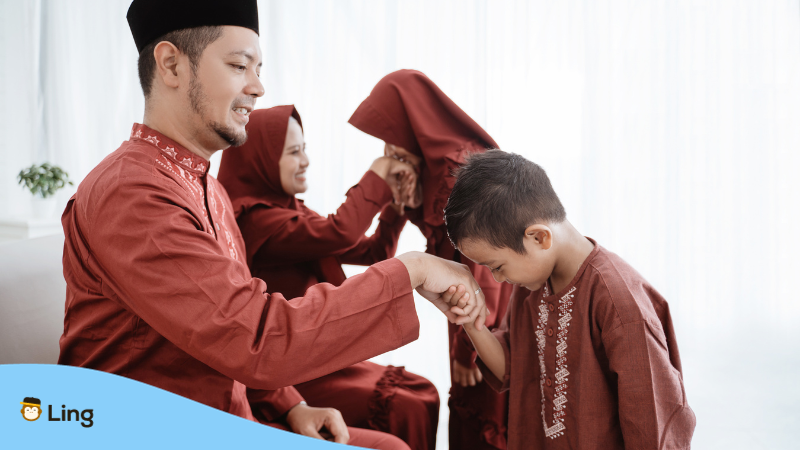A hello in Tagalog is a real conversation starter in the Philippines. Conversations are bound to happen during your stay with the friendly Filipino locals. With this being said, we have prepared a list of ways to say Hello in Tagalog to jumpstart a chat.
The Philippines is home to some of the friendliest people in the world. Filipinos are very hospitable. Even their greeting can show you how warm they are. So, it would be polite to reciprocate their warmth by greeting them in their own language. That’s why it’s important to learn the Tagalog language in case you visit the Philippines.
But don’t worry! Filipinos can understand and speak English really well! In fact, American English is considered an official language in the Philippines. It is mainly used in the fields of business, commerce, and trade. But wait! That does not mean you can forgo learning Tagalog since the rest of the Philippines doesn’t use English daily. So, if you want to journey into the Pearl of the Orient, you must learn even the most basic Tagalog greetings and commonly used slang terms.
To help you in your quest, we divided the article into two main parts, wherein the first half will feature the greetings while the other part will shed light on some of the common responses to the greetings besides Hello in Tagalog. If that sits well with you, then let’s start learning!

How Do You Say Hello In Tagalog
Tagalog is the most widely spoken language in the Philippines (along with English). The country has over 170 dialects across various provinces. But Filipino, the country’s official language, is based on the most commonly spoken version, which is Tagalog.
So, how do you say Hello in Tagalog? It’s easy! A simple hi or hello will do the trick! Most Filipinos greet each other that way since there is no direct translation of the word Hello in Tagalog.
But if you really want to greet someone in Tagalog, you can use these simple words. Just a word of advice: not all Filipinos use these words daily.
| English | Tagalog | Sound |
|---|---|---|
| Hi or hello | Mabuhay! | |
| Greetings! | Pagbati! | |
| How are you? | Kumusta po kayo? | |
| Good day | Magandang araw |
How To Say Hello, How Are You In Tagalog?
Instead of saying Hello, most Filipinos greet each other with “How are you?” This reflects the warm and friendly nature of Filipino culture, placing a strong emphasis on interpersonal relationships and community. In the Philippines, asking about someone’s well-being is not just a formality but a genuine expression of concern and interest in the other person’s life.
Here’s how you say “How are you” in Tagalog:
You can also use the words kamusta or kumusta by themselves and ignore the words ka or kayo, which both translate to ‘you.’ However, it is more polite to say the whole phrase, especially when talking to strangers.
Fun fact: The word kumusta is derived from the Spanish phrase cómo está, which means “how are you?”.
Polite Ways To Say Hello In Tagalog
Like in other Asian countries, politeness is heavily emphasized in the Philippines. It is deeply ingrained in Filipino culture. So, using respectful language is a basic part of social interactions. Beyond greetings, expressing gratitude and acknowledging others with courtesy are also highly valued.
Here are some polite words and expressions that should go with your greetings:
‘Po’ And ‘Opo’
When talking to someone in Tagalog, you might hear the words ‘po’ or ‘opo’ being said at the end of a sentence. These are honorific particles used to show respect and politeness. Usually, they are said when someone is speaking with an older person or someone with authority. They also use this when talking to someone they don’t know in a formal situation.
Let’s use the previous phrase we’ve learned as an example. To greet someone more politely in Tagalog, you can say: Kumusta po kayo? or Kamusta po?
Similarly, ‘opo’ is the polite Tagalog equivalent of ‘yes’ in English.
Mano Po
Mano po might be considered a greeting, but it’s also a way of showing respect to elders like parents, aunts, uncles, grandparents, godparents, and even former teachers. You cannot use this with people the same age as you, like your friends. You can’t also just say “Mano po”. You’ll have to take their hand and place it on your forehead. Take a look at the picture below.

Polite Words For Greeting Someone Based On Gender
There are a lot more polite words in Tagalog that you might hear when talking to a Filipino. While most are gender-neutral, some are used specifically for a certain gender. Let’s take a look at the polite word for men.
Kuya
This Tagalog word is used when talking to a guy older than you. However, if you want to be more polite, you can use it even when talking to a younger guy. The term Kuya is also used to address your older sister in Tagalog. When greeting someone, you can either say this before saying hello or do it the other way around.
Here’s an example of how you greet someone using this polite word:
- How are you, brother? – Kuya, kumusta po?
Ate
Of course, there is also a polite word for greeting women. Similarly, you can also use Ate when talking to older or younger women if you want to be more polite. The term Ate is also used to address your older sister in Tagalog.
Here’s an example of how you greet someone using this polite word.
- How are you, sister? – Ate, kumusta po?
These gender-specific polite words aren’t just used for greetings only. They can be used when addressing someone and you want to be polite.
How To Greet Someone At Different Times Of The Day
Some Tagalog words are also specifically used to greet someone at different times of the day. This might sound like a lot, I know. Fortunately, some apps like the Ling app could help you learn Tagalog easily. It’s downloadable for Apple and Android devices.
Let’s look at how you greet someone in Tagalog during different times. Before saying kamusta ka, you can greet them first by saying:
| English | Tagalog | Sound |
|---|---|---|
| Good morning | Magandang umaga | |
| Good afternoon | Magandang hapon | |
| Good evening | Magandang gabi |
Saying Goodbye In Tagalog
Saying goodbye to someone can be a really sad affair, no matter what language you’re using. It’s no different with Filipinos. That’s why they rarely use the Tagalog word for goodbye. Instead, they prefer to use the English word ‘goodbye’ or ‘bye’. This is because some Tagalog words are seen as having a deep emotional connection with their meaning.
That’s why you should use the Tagalog word paalam sparingly when saying goodbye. More often than not, Filipinos use this Tagalog word when cutting ties with someone or when they’re not expecting to see each other for a long time.
Say Hello In Tagalog Confidently
Saying Hello in Tagalog is more than just a greeting. It’s a warm expression of politeness and respect. Moreover, unlike other languages, Tagalog holds a unique set of words that are heavily influenced by different cultures worldwide. In fact, most traditional expressions are mainly based on foreign languages like English and Spanish!
So, the next time you greet someone in Tagalog, remember you’re not just saying hello. You’re taking part in a tradition that captures the heart of Filipino people. Saying hello in Tagalog is like creating a special moment that reminds us we’re all connected in this big, diverse world. Embrace it, enjoy it, and let the spirit of Kumusta remind you that no matter where we come from, we’re all part of the same human family.
Now that you know the basic greetings like Hello in Tagalog, we are sure that you can work your way in the Philippines with much more confidence. If this post helped, feel free to share it on social media and let others know the best greetings to help start a friendly conversation.



































































